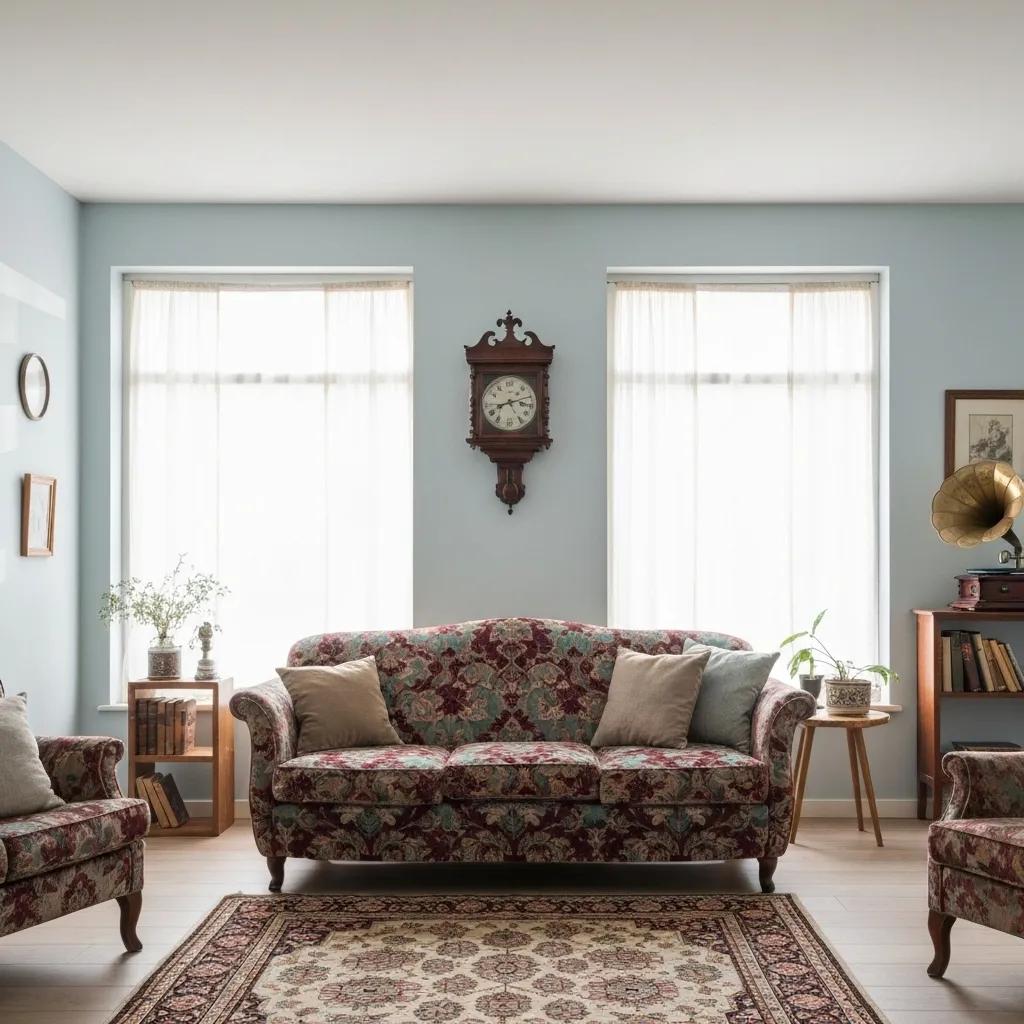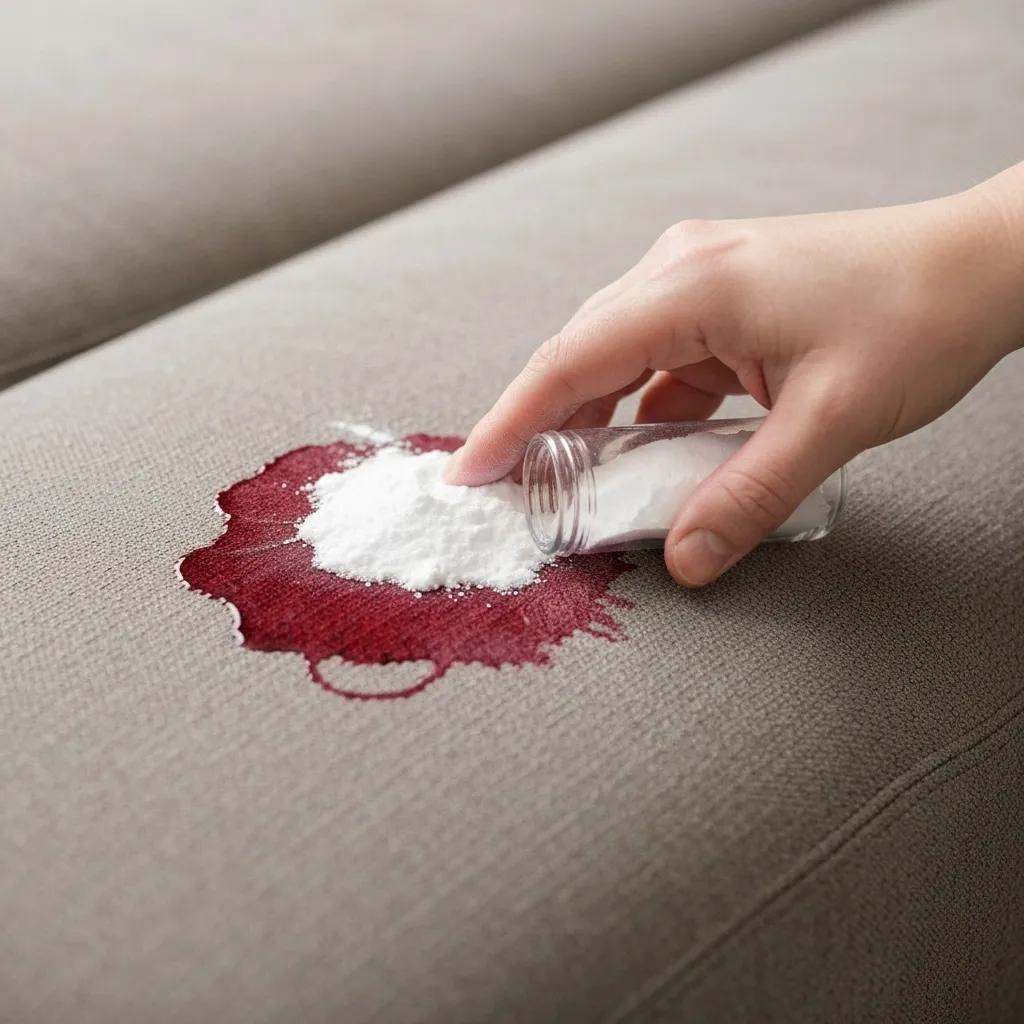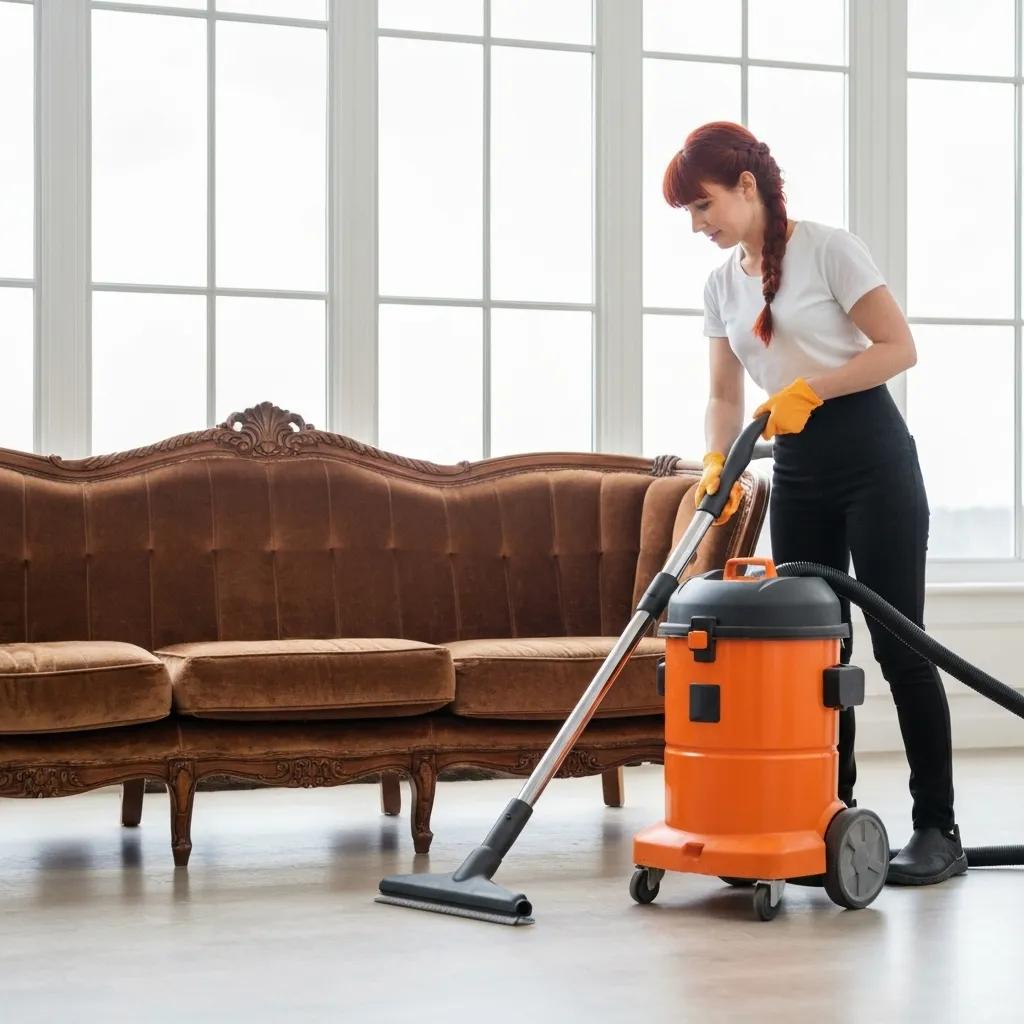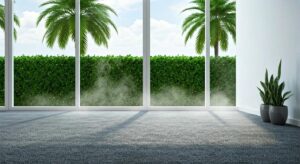
Furniture Stain Removal Methods That Really Work: Expert Guide to Upholstery Stain Removal and Eco-Friendly Solutions in Miami
Tackling stubborn stains on sofas, chairs, and wood can seem like an uphill battle, but tried-and-true furniture stain removal methods deliver dependable results to bring back your upholstery’s charm. In this comprehensive guide, you’ll discover common stain types, essential prep steps, effective DIY solutions for spills like red wine, pet accidents, grease, and water rings, plus clear indicators for when to bring in the pros. We’ll also cover smart prevention tactics, address pressing questions about stain removal, and explain why Miami homeowners count on Zellar Cleaning’s environmentally conscious approach and skilled technicians.
What Are the Most Common Furniture Stains and Their Challenges?
Understanding the different kinds of stains and how tricky they are to remove is the first step toward picking the right technique. Below, we’ve listed common furniture stains along with their defining characteristics and the obstacles they present during removal.
Each stain category calls for a specific cleaning principle and product. Recognizing these traits helps us understand how each stain interacts with upholstery fibers and finishes.
Which Types of Stains Affect Upholstery and Furniture Most Often?
Upholstery and wood surfaces typically gather oil, water, protein, and dye stains from everyday life. Oil and grease cling to sofa fabrics, water spills create glossy marks on wood, food proteins quickly set into fibers, and dyes from cosmetics or drinks sink deep into weaves. Pinpointing the stain’s origin helps narrow down treatment options and prevents damage to surrounding areas, preparing you for targeted removal. This knowledge is key to differentiating stain compositions and their removal difficulty.
How Do Oil-Based, Water-Based, Protein, and Dye Stains Differ in Removal Difficulty?
Oil-based spots resist water and need absorbent powders; water-based drips spread and can leave ring marks; protein soils set into fibers with heat and require enzymatic action; dye stains penetrate deeply and often need oxidizers or bleaching agents. A smart strategy involves choosing the right solvent, whether it’s cornstarch for oils, gentle blotting for water, enzyme sprays for proteins, or diluted hydrogen peroxide for dyes. Knowing these mechanisms prepares you to handle material-specific complications next.
What Are the Challenges of Removing Stains from Different Furniture Materials?
Different surfaces react uniquely:
- Fabric Upholstery – Absorbs liquids rapidly, may shrink or fade with harsh cleaners.
- Leather – Sensitive to water; requires pH-balanced, conditioning solutions.
- Wood – Prone to ring marks and finish damage; needs gentle oils or spirits.
Assessing material composition and manufacturer cleaning codes ensures you select safe products. Identifying fabric codes (W, S, WS, X) and leather finish types prevents irreversible damage, guiding you toward the crucial pre-cleaning steps we’ll cover next.
What Are the Essential Pre-Cleaning Steps for Effective Furniture Stain Removal?
- Identify your furniture’s fabric type and check the cleaning code.
- Gently blot to lift excess residue without rubbing.
- Test your chosen cleaning solution in a hidden spot first.
- Gather all the necessary tools and supplies.
Completing each of these steps minimizes risks and boosts stain removal success. After testing your solutions, you’ll be ready to apply DIY and professional methods with confidence.
How Do You Identify Your Furniture’s Fabric Type and Cleaning Codes?
Every upholstered piece comes with a cleaning tag detailing specific codes:
- W – Water-based cleaners are safe to use
- S – Solvent-based cleaners only
- WS – Either water or solvent cleaners can be used
- X – Vacuum only, no liquids
Matching the correct cleaner to these codes protects your furniture from discoloration and fiber damage. Proper identification leads directly into understanding the importance of blotting and testing.
Why Is Blotting and Testing Cleaning Solutions Important Before Treatment?
Blotting helps absorb surface spills without spreading them, while testing ensures that the cleaner won’t cause color bleeding or weaken the fabric. Without these precautions, strong cleaning agents can lead to permanent fading or shrinkage. Always blot and test to confirm safety before proceeding with full-surface applications, following the safe-preparation guidelines below.
How Can You Safely Prepare Your Furniture for Stain Removal?
Get your supplies ready: a microfiber cloth, a soft-bristle brush, absorbent powder (like baking soda or cornstarch), a spray bottle with a diluted cleaner, and a small bowl for mixing. Place towels underneath the stained area to catch any drips. This setup helps contain spills and prevents cross-contamination, creating the ideal conditions for targeted stain treatments.
What DIY Furniture Stain Removal Methods Really Work for Common Stains?

Many minor spots can be effectively treated with common household ingredients. Here are proven DIY methods for four frequent types of spills.
How to Remove Red Wine Stains from Upholstery Using Baking Soda and Vinegar?
For fresh red wine spills, blot the area immediately to lift as much liquid as possible. Mix equal parts white vinegar and water, then lightly mist the stain. Sprinkle baking soda over the damp spot and let it sit for at least an hour to dry. Vacuum up the residue to reveal a visibly lighter fabric surface and prevent dye molecules from re-bonding. By addressing both pH and absorbency, this combination effectively breaks down dye bonds and draws out moisture.
What Are the Best DIY Methods for Pet Stains and Odor Removal on Fabric?
Enzyme cleaners are designed to penetrate and break down organic proteins found in pet accidents like urine and vomit. Apply an enzyme-based spray to the affected area, let it dwell according to the manufacturer’s instructions, then gently blot. Finish by sprinkling baking soda, letting it sit for 30 minutes, and then vacuuming to neutralize any lingering odors. This two-step approach dissolves protein chains and lifts away smells, restoring freshness without harsh chemicals.
How Can You Effectively Remove Grease and Oil Stains from Fabric Sofas?
Treat fresh grease stains with cornstarch: generously cover the spot and wait 15–20 minutes for it to absorb the oil. Brush off the powder and apply a tiny drop of mild dish soap diluted in warm water. Gently work the solution into the fabric fibers with a soft brush, then blot with a clean cloth. This method combines mechanical absorption with surfactant action to lift oil away from the fabric strands.
What Are Simple Ways to Remove Water Rings from Wood Furniture?
Water rings on wood finishes can often be treated with household oils or spirits. Gently rub a small amount of mayonnaise into the ring using a soft cloth, let it sit for several hours, then wipe it clean. Alternatively, dip a cotton swab in mineral spirits and lightly buff the spot. Both methods help replenish the drying oils in the finish and dissolve the milky residue caused by moisture, allowing the ring to blend seamlessly back into the surrounding wood grain.
When Should You Call Professional Furniture Stain Removal Services in Miami?
While DIY methods can handle many spills, certain situations call for expert intervention to prevent making the problem worse or damaging the fabric. You should contact professionals when:
- Stains have set for over 48 hours and penetrated deeply.
- The fabrics are delicate or have an “X” cleaning code, meaning no liquids should be used.
- Strong odors persist even after home treatments.
- There are multiple or large stains covering significant areas.
In these instances, trained technicians utilize advanced processes, eco-friendly solutions, and specialized equipment to restore fabrics safely. Learn more about how Zellar Cleaning’s services can elevate your results.
What Types of Stains and Fabrics Require Professional Expertise?
Leather upholstery, silk blends, custom rugs, and deeply set dye stains often require professional care. Attempting to use harsh solvents or heat on these materials can risk color fading, shrinkage, or surface etching. Professionals can tailor solutions specifically to each material’s chemistry, preserving its integrity while effectively eliminating stubborn soils.
How Does Zellar Cleaning’s Eco-Friendly Approach Benefit Your Furniture?
By using biodegradable detergents, enzyme boosters, and low-moisture equipment, Zellar Cleaning minimizes environmental impact and avoids leaving behind chemical residues that can degrade fabric fibers over time. This eco-conscious service helps keep fabrics soft, colors vibrant, and indoor air quality high—ensuring your furniture remains beautiful and safe for your family and pets.
What Is the Professional Stain Removal Process Used by Zellar Cleaning?

- Inspection – We carefully identify the fabric type, stain origin, and cleaning code.
- Pre-Treatment – We apply custom enzyme or solvent solutions to loosen soils.
- Hot Water Extraction – We use heated, eco-friendly detergent to lift contaminants.
- Post-Cleaning Protection – We can apply a protective sealant to help repel future spills.
This structured protocol ensures deep stain removal while safeguarding fabric integrity—it’s professional-grade care designed to extend your furniture’s life and appearance.
How Can You Prevent Future Furniture Stains and Protect Upholstery?
- Apply a fabric protector spray to create an invisible shield.
- Vacuum upholstery weekly to remove dust and prevent soil buildup.
- Blot any spills immediately to stop stains from setting.
- Rotate cushions regularly to ensure even wear.
Implementing these simple practices can curb stain formation and keep your fabrics looking fresh, leading us to the advantages of periodic professional cleaning.
What Are the Best Fabric Protectors and Regular Maintenance Tips?
High-quality fabric guards—often silicone-based or fluorocarbon-free—coat fibers and prevent liquids from penetrating. Combine their application with routine vacuuming using an upholstery attachment and spot-treat new stains promptly. This dual approach helps maintain fiber health and color clarity over time.
How Does Regular Professional Cleaning Extend Furniture Life?
Scheduling professional upholstery deep-cleaning every 12–18 months removes embedded allergens, oils, and pollutants that can weaken fibers. By restoring fiber resilience and renewing protective finishes, professionals help preserve your upholstery’s texture and appearance for many years longer than relying solely on DIY efforts.
What Are the Most Frequently Asked Questions About Furniture Stain Removal?
What Is the Best Way to Remove Red Wine from a Couch?
Blot fresh wine immediately, then apply a paste of baking soda and water. Let it dry completely before vacuuming, or mist with a diluted vinegar solution to help break down the pigment. Professional upholstery cleaning offers deeper extraction if the stain proves stubborn.
Are Eco-Friendly Stain Removers Effective on Furniture?
Absolutely! Natural agents like vinegar, baking soda, and plant-based enzymes are effective at tackling most common stains without harsh chemicals. They gently break down oils and proteins, making them safe for home use and sensitive fabrics.
When Is Professional Furniture Stain Removal Necessary?
You’ll want to call in the experts for delicate fabrics, set-in or old stains, large spill areas, and persistent odor issues. Professionals can prevent permanent damage by precisely matching solvents and processes to each material’s specific cleaning code.
How Do Upholstery Cleaning Codes Affect Stain Removal Methods?
Upholstery cleaning codes (W, S, WS, X) are crucial because they dictate which solvents or water-based products you can safely use. Fabrics marked “W” can handle mild detergent solutions, while those marked “S” or “X” require specialized, low-moisture techniques to avoid damage.
Why Choose Zellar Cleaning for Professional Furniture Stain Removal in Miami?
Choosing Zellar Cleaning means gaining peace of mind thanks to our proven expertise, green solutions, and commitment to outstanding customer satisfaction. Here’s why homeowners in Miami prefer our services:
- Experienced Technicians who are trained in advanced stain-removal chemistry and fabric care.
- Eco-Friendly Products that prioritize your health and the environment.
- Guaranteed Satisfaction backed by glowing feedback from local clients.
Discover more about our dedication to quality on the About Zellar Cleaning page.
What Makes Zellar Cleaning’s Technicians Experts in Upholstery Stain Removal?
Our team members hold industry certifications and participate in ongoing training covering the latest cleaning agents and equipment. They possess a deep understanding of fabric compositions, enabling them to select the most effective solutions and apply precise techniques to remove even the toughest stains without harming fibers.
How Does Zellar Cleaning Ensure Customer Satisfaction and Eco-Friendly Service?
Every appointment begins with a thorough pre-inspection, followed by a customized eco-friendly cleaning plan, and concludes with a follow-up quality check. We use client feedback to continuously improve our services, and our green product lineup meets stringent safety standards—ensuring results you can trust.
How Can You Book a Furniture Stain Removal Service with Zellar Cleaning?
Ready to restore your upholstery’s look and extend its lifespan? Give our friendly team a call or fill out the online form on the Contact Zellar Cleaning page to schedule your eco-conscious, professional stain removal service today. To see proof of our excellence, read real success stories on our Customer Reviews page.
Keeping your furniture spotless is achievable when you combine proper pre-cleaning, smart DIY methods, and expert services. With these proven stain removal techniques and preventive measures, your upholstery can look and feel brand new—whether you tackle spills yourself or call on Miami’s trusted professionals at Zellar Cleaning.


